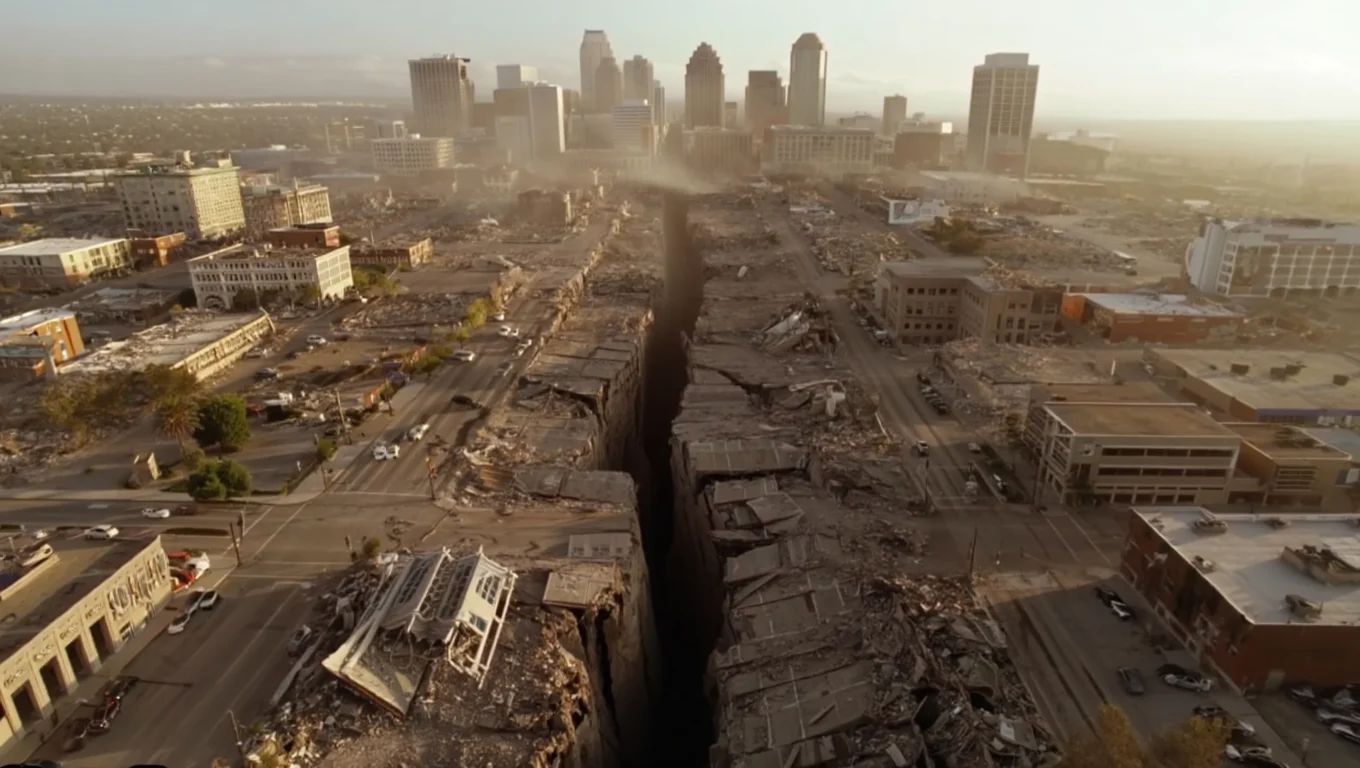Follow us on Google News (click on ☆)
A new study shows that this fault descends less steeply underground than previously thought. The fault stretches about 250 miles (400 km) along the Wasatch Mountains. Researchers discovered that at certain depths, it is more inclined. This could cause stronger ground shaking at the surface, especially in urban areas, increasing risks for residents.

Artistic illustration of a fault splitting a city in two.
The study, published in the journal Geology, focuses on the rocks that make up the fault. By studying them, scientists are trying to better understand how this fault moves and what it means for earthquakes.
A 2020 earthquake near Magna served as a trigger for this research. Although not very deep, it caused significant damage. This showed that even a shallow earthquake can be destructive.
In the lab, researchers found that the fault rocks are very smooth. It's a bit like sliding on ice: they move more easily than if they were rough. This ease of sliding may come from changes in the rocks dating back more than 1.7 billion years.
Researchers explain that the more easily the rocks slide, the stronger the shaking can be at the surface. This means greater risks for nearby residents.
With this discovery, experts believe that risk maps for cities near the fault need to be revised. Earthquake protection plans may need to be updated.
Why do events from a billion years ago still matter?
Rocks retain traces of past deformations. Even billions of years later, it can change their behavior.
In the Wasatch Fault, these ancient transformations have made the rocks very smooth. Less friction means they can slide more easily... and shake more violently.
All this shows that we must also look at very ancient geological history to better predict today's earthquakes. Otherwise, we risk misjudging the dangers.